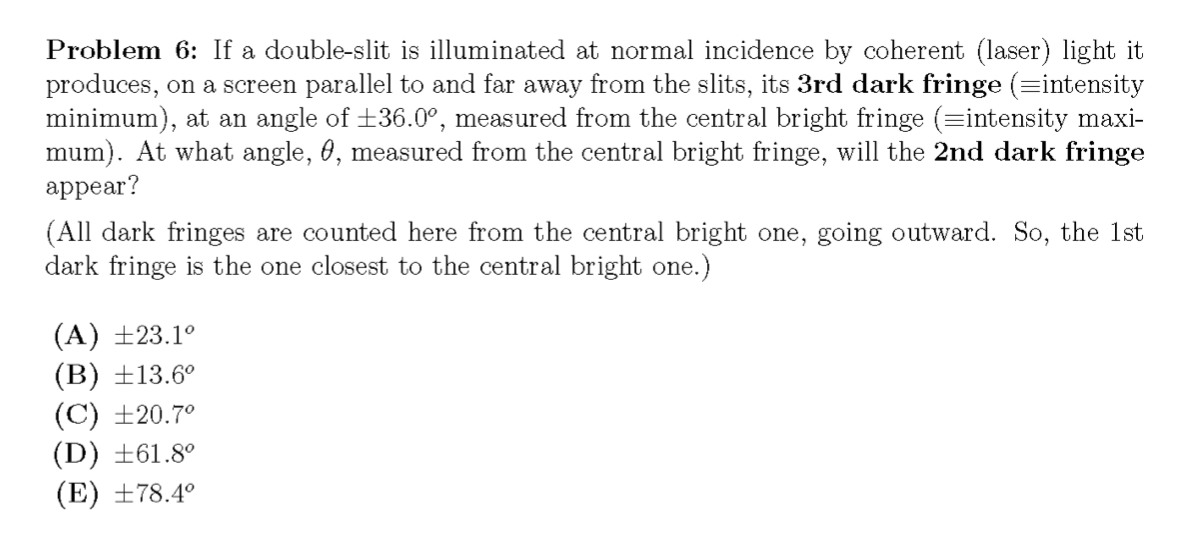Problem 6: If a double-slit is illuminated at normal incidence by coherent (laser) light it produces, on a screen parallel to and far away from the slits, its 3rd dark fringe (=intensity minimum), at an angle of +36.0°, measured from the central bright fringe (=intensity maxi- mum). At what angle, 0, measured from the central bright fringe, will the 2nd dark fringe appear? (All dark fringes are counted here from the central bright one, going outward. So, the 1st dark fringe is the one closest to the central bright one.) (A) ±23.1° (B) ±13.6° (C) ±20.7° (D) ±61.8° (E) ±78.4°
Problem 6: If a double-slit is illuminated at normal incidence by coherent (laser) light it produces, on a screen parallel to and far away from the slits, its 3rd dark fringe (=intensity minimum), at an angle of +36.0°, measured from the central bright fringe (=intensity maxi- mum). At what angle, 0, measured from the central bright fringe, will the 2nd dark fringe appear? (All dark fringes are counted here from the central bright one, going outward. So, the 1st dark fringe is the one closest to the central bright one.) (A) ±23.1° (B) ±13.6° (C) ±20.7° (D) ±61.8° (E) ±78.4°
Related questions
Question
100%

Transcribed Image Text:Problem 6: If a double-slit is illuminated at normal incidence by coherent (laser) light it
produces, on a screen parallel to and far away from the slits, its 3rd dark fringe (=intensity
minimum), at an angle of +36.0°, measured from the central bright fringe (=intensity maxi-
mum). At what angle, 0, measured from the central bright fringe, will the 2nd dark fringe
appear?
(All dark fringes are counted here from the central bright one, going outward. So, the 1st
dark fringe is the one closest to the central bright one.)
(A) ±23.1°
(B) ±13.6°
(C) ±20.7°
(D) ±61.8°
(E) ±78.4°
Expert Solution
This question has been solved!
Explore an expertly crafted, step-by-step solution for a thorough understanding of key concepts.
This is a popular solution!
Trending now
This is a popular solution!
Step by step
Solved in 3 steps with 3 images
